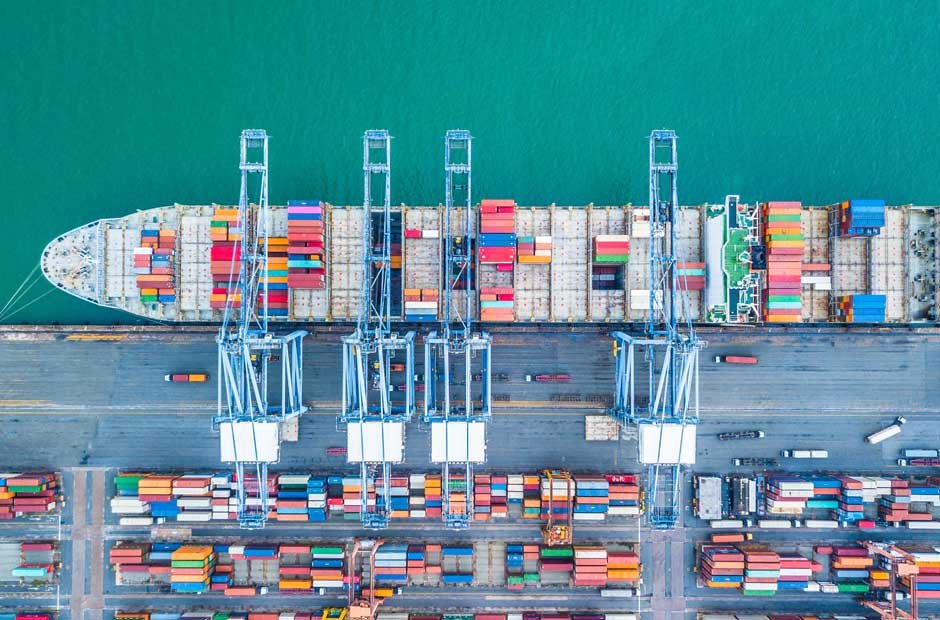Ports serve as vital gateways for global trade, connecting nations and facilitating the movement of goods. Ensuring the safety and security of these ports is paramount to maintain the efficiency and reliability of port services. Port security and risk management play crucial roles in safeguarding against threats and mitigating potential risks. This article delves into the key aspects of port security, risk assessment, and the strategies employed to protect port services.
Understanding Port Security
Port security entails measures and protocols implemented to safeguard ports from various threats, including terrorism, smuggling, and unauthorized access. Regulatory bodies and international conventions establish standards and guidelines to maintain port security. A multi-layered approach is adopted, incorporating physical security measures, surveillance systems, access control, and cybersecurity protocols to ensure comprehensive protection.
Risk Assessment and Management
Comprehensive risk assessments are essential to identify vulnerabilities and potential threats to port security. Risk management frameworks encompass elements such as risk identification, analysis, evaluation, and response planning. Leveraging technology, data analytics, and intelligence sharing enhances risk management capabilities, allowing port authorities to proactively address security concerns.
Risk Identification: Ports conduct thorough assessments to identify potential security risks and vulnerabilities. These assessments consider factors such as the port’s geographical location, the nature of cargo handled, the volume of traffic, and the threat landscape. Identifying and prioritizing potential risks helps in formulating effective security strategies.
Risk Analysis and Evaluation: Once risks are identified, a detailed analysis is conducted to evaluate the likelihood and potential impact of each risk. This analysis helps in understanding the severity of risks and their potential consequences on port operations, safety, and reputation. Ports also consider the economic implications of potential security incidents and evaluate the cost-effectiveness of security measures.
Technology and Data Analytics: Technology plays a pivotal role in risk management. Ports leverage advanced technologies such as data analytics, predictive modeling, and real-time intelligence to identify patterns, detect anomalies, and predict potential security threats. By harnessing data from various sources, including sensors, surveillance systems, and intelligence databases, ports can make informed decisions and take proactive security measures.
Port Security Technologies and Systems
Port security relies on advanced technologies and systems to monitor and protect port facilities. These technologies continuously evolve to keep pace with emerging threats and enhance security capabilities.
Video Analytics: Video analytics technologies analyze CCTV footage in real-time, enabling automatic detection of suspicious activities or objects. Advanced algorithms can identify unauthorized access attempts, abnormal behavior, or abandoned objects, triggering alerts for immediate response.
Intrusion Detection Systems (IDS): IDS employ sensors, motion detectors, and perimeter monitoring technologies to detect unauthorized access attempts or breaches. These systems can alert security personnel and activate appropriate response protocols.
Biometric Authentication: Biometric systems, such as fingerprint or facial recognition, provide secure and reliable access control. These technologies ensure that only authorized personnel gain entry into sensitive areas, enhancing overall security.
Collaboration and Stakeholder Engagement
Collaboration among port authorities, law enforcement agencies, customs officials, and private stakeholders is vital for comprehensive port security. Information sharing, best practices exchange, and joint training initiatives enhance the collective ability to address security challenges effectively.
Public-Private Partnerships: Ports engage in partnerships with private entities, including terminal operators, shipping lines, and security service providers. These collaborations foster the sharing of expertise, resources, and technologies, strengthening overall security measures.
Government Cooperation: Ports work closely with government agencies responsible for security, customs, immigration, and law enforcement. Effective coordination ensures a cohesive approach to port security, facilitating seamless operations and efficient risk management.
International Cooperation: Given the global nature of trade, ports collaborate internationally to address security concerns. Participation in international forums, sharing of intelligence, and adherence to international security standards enhance port security and contribute to the global supply chain’s integrity.
Emergency Response and Business Continuity
Comprehensive emergency response plans are necessary to address security incidents and natural disasters effectively. Ports develop strategies to ensure the safety of personnel, minimize disruptions to port operations, and enable swift recovery.
Emergency Preparedness: Ports establish emergency response plans that outline procedures for handling security incidents, natural disasters, or other emergencies. These plans encompass communication protocols, evacuation procedures, incident reporting mechanisms, and coordination with relevant authorities.
Training and Drills: Regular training sessions and drills are conducted to familiarize port personnel with emergency response protocols. These exercises test the effectiveness of plans, identify areas for improvement, and ensure that staff is well-prepared to respond swiftly and efficiently during crises.
Business Continuity Planning: Ports develop business continuity plans to maintain critical operations during security incidents or unforeseen events. These plans identify essential services, alternative communication channels, backup power sources, and contingency measures to ensure minimal disruption to port services.
Future Trends and Challenges
The landscape of port security is continually evolving, presenting both opportunities and challenges. Ports must stay abreast of emerging trends and address evolving security risks.
Autonomous Systems:Autonomous Systems: The rise of autonomous systems, such as unmanned aerial vehicles (UAVs) and unmanned surface vessels (USVs), presents new possibilities for port security. These systems can be deployed for surveillance, monitoring, and rapid response, augmenting the capabilities of human personnel. However, the integration of autonomous systems requires careful consideration of regulatory frameworks, cybersecurity vulnerabilities, and potential ethical concerns.
Blockchain Technology: Blockchain technology holds promise for enhancing port security by providing secure and tamper-proof records of transactions and data exchanges. Its decentralized nature and immutability can improve supply chain transparency, mitigate the risk of fraud, and enhance traceability of goods. Implementing blockchain in port services requires collaboration between stakeholders and addressing technical and regulatory challenges.
Internet of Things (IoT): The proliferation of IoT devices in port operations offers benefits and security implications. IoT devices can provide real-time data on cargo, equipment, and environmental conditions. However, the vast network of interconnected devices can also introduce vulnerabilities, requiring robust cybersecurity measures to protect against unauthorized access and data breaches.
Conclusion
Safeguarding port services through robust security and risk management measures is imperative for the global trade ecosystem. Ports must adopt multi-layered security approaches that encompass physical security measures, advanced technologies, risk assessments, and collaborations. By leveraging technology, data analytics, and intelligence sharing, ports can proactively identify and mitigate potential risks.
The collaboration of port authorities, government agencies, private stakeholders, and international organizations strengthens security measures and fosters a collective approach to addressing security challenges. Emergency response planning, business continuity measures, and cybersecurity protocols ensure preparedness and resilience in the face of security incidents and unexpected events.
As the industry progresses, ports must embrace emerging trends and technologies such as autonomous systems, blockchain, and the Internet of Things. These advancements have the potential to enhance security capabilities, supply chain transparency, and efficiency. However, careful consideration of regulatory frameworks, cybersecurity measures, and ethical implications is vital to maximize the benefits of these innovations.
Continual adaptation, collaboration, and innovation are essential for port security and risk management. By prioritizing the safety and security of port services, nations can safeguard global trade, protect critical infrastructure, and ensure the smooth flow of goods for sustainable economic growth. Together, we can navigate the ever-changing waters of port security and preserve the integrity and resilience of port services.
















